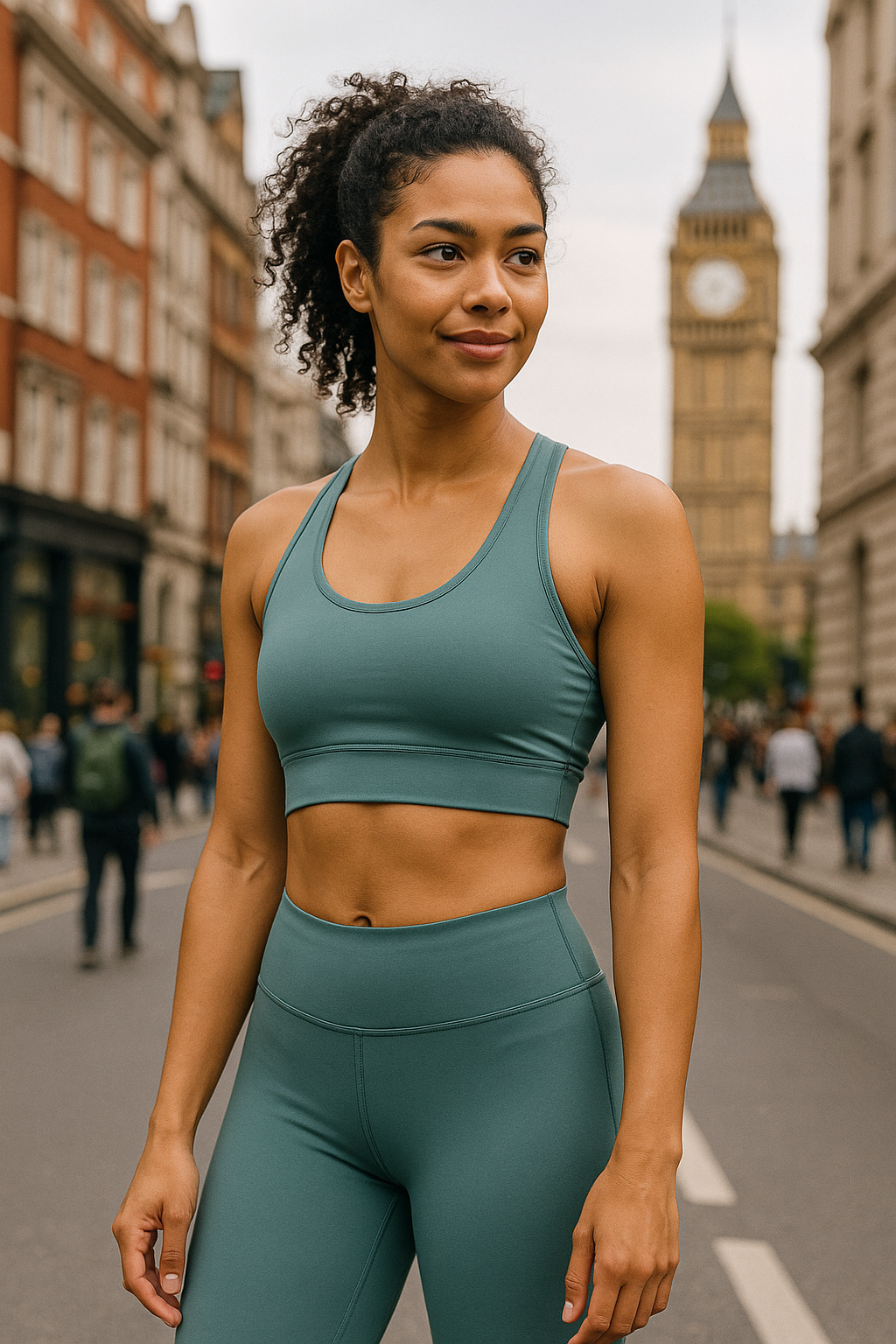 —A guide for sportswear brands looking to win over UK consumers and outpace the competition
—A guide for sportswear brands looking to win over UK consumers and outpace the competition
Brand leaders, trendspotters, and fabric fanatics—grab your notebooks! We’re heading to the UK to decode what’s brewing in Britain’s sportswear market for 2026. The UK isn’t just a “testing ground” for Europe—it’s a high-stakes stage where fashion, fitness, social buzz, and digital innovation collide. If you want to score big in Britain, here are the key trends you must not overlook.
British consumers have long since graduated from “activewear for the gym only.” Sportswear is now a staple in daily wardrobes. The UK sportswear market is booming, projected to grow from $6.53 billion USD in 2024 to $9.166 billion by 2033
Why This Matters
Fitness is a lifestyle: Running, outdoor training, yoga, and gym memberships are all on the rise in UK cities .
Athleisure is here to stay: Sportswear seamlessly blends with street and casual outfits. Shoppers want clothes that work for gym, office, café meetups, and beyond. It can’t just “look like gym wear”—it needs to feel like daily wear too
Tips for Brands
Product Design: Marry technical features (quick-dry, stretch, breathability) with everyday-friendly cuts and colors.
Marketing: Don’t just say “for running”—say “from morning run to coffee catch-ups to the office.”
Lifestyle Content: Show your gear not just in gyms, but on London’s Underground, in local cafés, or street corners.
Real Example
UK-based Gymshark started as a pure gym brand, but is now recognized as a “fitness + lifestyle” icon
In the UK, “online” isn’t an add-on. It’s the main event. Brands sticking to brick-and-mortar risk being left behind.
Fast Facts
UK e-commerce retail is projected to hit $285.6 billion by 2025
Direct-to-consumer (DTC) models are on the rise, helping brands control customer data, loyalty, and margins
Why It’s Hot
Shoppers want instant responses: online ordering, fast shipping, free returns, virtual try-ons, social media engagement—the online journey is king.
Gen Z especially trust influencers, social recommendations, and brand communities over traditional ads.
DTC lets you own the customer relationship, build communities, and react faster in the fiercely competitive UK market.
Brand Playbook
Launch an online flagship, and prioritize mobile UX—UK shoppers are glued to their phones.
Use social media (Instagram, TikTok) for “outfit + fitness + lifestyle” storytelling, not just product shots.
Experiment with web-only drops, time-limited offers, and member exclusives to spark FOMO.
Bridge offline/online: pop-up stores and flagship experiences can support “browse offline, buy online” journeys.
UK consumers are increasingly “conscious”—they care not just about style and function, but also “where it came from” and “where it ends up.” In 2026, this is a brand non-negotiable.
Key Movements
Use recycled polyester, organic cotton, bamboo, and bio-based elastane
Performance matters, but green claims must go beyond slogans—prove your supply chain, recycling systems, and circularity (Onclusive).
The UK premium sportswear segment expects a 9.3% CAGR over five years from 2025, driven in part by eco-performance (GrandViewResearch).
Brand Moves
Make your sustainability strategy transparent—across materials, production, packaging, shipping, and recycling. UK shoppers check!
Tell a story: “This pair of shorts uses 10 recycled bottles,” or “bio-elastane means lower carbon.” Details matter.
Highlight “performance + eco”—winning over both the athlete and the conscious consumer.
Beware of greenwashing: UK shoppers are savvy, and call out empty claims.
Real Example
Even global giants like Nike and Adidas are making green moves—UK-focused brands should watch, adapt, and push even further
Forget just “quick-dry” or “stretchy.” In 2026, the UK sportswear market is warming up to “smart,” “interactive,” and “tech-powered” apparel.
What’s New
Smart textiles: Integrated sensors that monitor breathing, muscle movement, temperature, or posture
Next-gen fabrics: Antibacterial, UV-resistant, thermoregulating, seamless, and bio-elastic blends
Fitness app integration: Apparel doesn’t just “wear,” it connects—to your phone, your trainer, your fitness community
Brand Strategy
Consider releasing a “hero” tech piece (like smart training tops or sweat-monitoring shorts) to test UK market appetite.
Don’t overdo it—keep most lines classic, but let one or two products wave the tech innovation flag.
Clearly explain the value: Why is this “smart” shirt pricier? What new benefit does it bring?
Partner with gyms, digital fitness brands, or smart equipment platforms—turn apparel into part of a connected fitness journey.
The UK market is getting more nuanced. Brands that stick to “one style fits all” risk missing the next growth wave.
What’s Happening
Women’s activewear is outpacing men’s: Reports show women’s sportswear is growing faster in the UK
Specific sports and lifestyles demand specific gear: Yoga, Pilates, outdoor running, city cycling, gym training, casual crossover—each has its own tribe, needs, and aspirations.
Action Points
Invest in women’s lines: Real design, sizing, colors, and function tailored for women (not just “shrinking the men’s version”).
Think scenarios: Cycling apparel, city running gear, gym-to-street hybrids, outdoor/urban crossovers.
Build communities for each segment, online and offline—foster brand loyalty through genuine connection.
Localize: Tactics for London, Manchester, Birmingham, rural areas, runners, cyclists, gym-goers—treat the UK as multiple micro-markets.
As the UK sportswear market races into a new era of sustainability, innovation, and authentic style, choosing the right supplier is more important than ever. That’s why industry leaders around the globe are turning to Eationwear—a partner dedicated to high-quality, on-trend, and eco-friendly activewear manufacturing.
